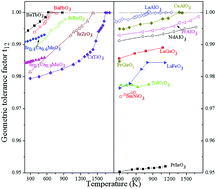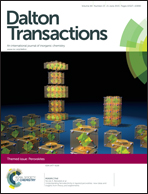High temperature neutron diffraction studies of PrInO3 and the measures of perovskite structure distortion
Abstract
The crystal structure of PrInO3 was investigated in the temperature range 303–1123 K by high-resolution neutron-powder diffraction. The PrInO3 adopts a highly distorted variant of the perovskite structure with the orthorhombic Pnma space group in the whole temperature range investigated. The bond length and bond-angle analysis revealed a very slow tendency to decrease structural distortion with increasing temperature. Comparison of different parameters quantifying perovskite structure distortion calculated for PrInO3 and the similar PrAlO3 and PrGaO3 shows the advantage of using the tolerance factor t12 calculated for the 12-fold coordinated Pr by geometrical averaging of the individual interatomic distances. An additional advantage of the tolerance factor method results from the possibility of extending it to predict the average structural distortion and the geometrical stability of the perovskites at various temperatures once the accurate dependence of t(x,T,d) on the composition, temperature and oxygen content is found. By comparing PrInO3 with several AMO3 perovskites containing ions in the fixed oxidation state on the A and M crystal sites it was found that structural distortion and the tolerance factor t12 for PrInO3 are consistent with the empirical thermal expansion coefficient based on the bond strength calculation [R. M. Hazen, and C. T. Prewitt, Am. Mineral., 1977, 62(3–4), 309]. In contrast to perovskites AMO3-d containing mixed-valent M ions, which allow for a wide range of changes of the tolerance factor t12(T,d) as a function of oxygen content, perovskites AMO3 with M ions in the fixed oxidation state show much less flexibility. This flexibility is further reduced for the A3+M3+O3 perovskites like PrInO3 for which even a large change of the synthesis temperature has a minor effect on controlling the resulting t12(T) and the structural phase in comparison with A2+M4+O3 perovskites. The only parameter left for A3+M3+O3 materials allowing formation of various perovskites and hexagonal phases is the total pressure, which may significantly change t12(T,P).

- This article is part of the themed collection: Perovskites

 Please wait while we load your content...
Please wait while we load your content...